Making of the “huffer” – Garrett-Airesearch GTC-85 Air Transportable APU – scratchbuilt, 1:48
Hi All! Happy new modelin' year to everyone first as this will be my first article this year. Ops! I didn't do as much modeling recently as I wanted but there are seome progress. I made the mistake last year that I wached Ken Burns and Lynn Novick's ten-part, 18-hour documentary series, THE VIETNAM WAR. I really enjoyed the experience and - guess what - after 27 years of absence I begin to make jets again (OK there had been a He-178 and a Pulqui but these don't count as "modern jets" right?). Well I thouth that prop. and golden age racers will be enough for me and no, I don't buy or collect any other era's aircraft anymore but such is life. I hooked again. I choosed the magnificent Hasegawa/Eduard A-4 as my "first" jet and at the same time I begin to collect articles and goodies for the project. I saw this strange little fellow on some pictures - on Vietnam war ones also - and I thought that I want one for my Skyhawk. For my surprise there is no one any on the market (except in 1:72 from F4Model - a great stuff judged from the pictures and the M1A1 starter cart from Special Hobby resin as a future release in 1:48 but that is stricly an USAF thingy not NAVY) so it was time to some more research and the usual "hard way".
The first I learned that the thing is a "huffer" The urban dictionary says that the huffer is "Someone who is addicted to inhalants. ... Spray paint is commonly used." - well that's probably me playing with my airbrush and some Alclad or Gunze Mr 🙂 . In aviation, a huffer is an external engine that creates large volumes of pressurized air used to start large gas turbine jet engines.
Here are some more info (if You are familiar with what is a huffer or APU does just jump it over): In general, the main challenge with starting a turbine engine is ensuring there is sufficient airflow before introducing fuel. If the turbine blades are not pushing enough air through the engine, introducing fuel and beginning combustion will cause the engine to overheat and will damage it. This is called a "hot start". The Auxiliary Power Unit is a smaller turbine engine that generates high-pressure air. The APU will spin up and some pressurized air will be 'stolen' from its compressor to supply "bleed air" for engine starting, the air conditioning packs, etc. The APU, being smaller, is usually can be started with a battery. Most jet engines use this method. Military aircraft often hasn’t got onboard APU to save weight (ie. A-3D, F-4D, A-4 until „M”, F-8 or NAVY A-7 etc). The Huffer is an external APU device powered by a gas turbine compressor and is the primary air start unit for Naval Aviation. The unit is housed in both a shore based and carrier configuration, in this case in an auxiliary fuel tank shaped pod that can be transported on an aircraft’s external storage point making it versatile in any environment. Because of its low to high flow start capability, it has the ability to support every aircraft in the Navy and Marine Corps inventory. The “Gas Turbine Compressor model 85” or the “Gas Turbine Compressor & Power model 85” must be the World’s most common and successful gas turbine compressor for aircraft starting. Many thousands have been built and used both in ground air-start carts and as APUs in aircraft. The model 85 consists of a two-stage compressor and single stage radial turbine and a single can combustor. Several different models of 85 series exist. A unit known as the GTC85 consists of a compressor unit with only a small accessory gearbox and so function only as a compressor unit. A small gearbox carries the engine accessories and a small generator for battery re-charging. The GTC85 series unit was also mounted in the USAF starting cart known as the MA1A and not to be confused with the gas turbine powered M1 Abrams tank of similar designation. This kind of air ransportable huffers - the subject of my model - were widely used int he 50’s 60’ and during the Vietnam war by the NAVY and the MARINES both onboard ships and on forward air bases. Blue Angels' Skyhawks always took their huffers with them on their tours. There are still many in use even today but You won't see them on NAVY aircraft carriers anymore as more modern solutions replaced them.
I collected lot of pictures and as many drawings, acticles diagrams etc. as I can and made some scale drawings - You can see some of them among the pics. After that I made a sketch how I want to make the model. I wanted to replicate some of the interior so I planned to make a "shell" like body first with vacuumforming or so. Fortunately I found some auxiliary tanks and fuselage parts in my scrap box close enough the shape I wanted to create as a starting point. I reshaped these parts as per the drawings and I could begin the carving and sanding and cutting and sanding and... oh did I say that sanding already? The various parts made from plastic sheet thin aluminium (aluminum? as You want...) sheets (for cover doors for example), wires and two spare wheels also from my scrapbox. You can see the main steps on the pictures - all just good old modeling stuff and elbow grease. When I finished and tried all the parts I made silicone molds to resin cast them. I obtained a vacuum camber last year and this stuff makes a real difference in molding and casting. My next project is to make a pressure camber. The most difficult part was the air hoose but somehow I could manage to make it - finally I could even bend and form the resin copy into shape in hot water quite easily. Just a hint.
The build was quite straightforward after this - I made two "huffers" at the same time because I can't decide which one looks better the white or the yellow one - now I like the yellow more. I even designed a decal sheet for the project but finally (as my printer striked than) I used some spare decals this time and simply paint the stripes - these indicate where You doesn't suppose to stand when the turbine is working (the moving parts are between the stripes so when the 42000rpm spinning turbine accidentally fell apart that's where something may fly out... well...). I hope You like it - and the article wasn't too long - sorry for my typos it's quite late here. All C&C are welcome as usual. Next time maybe about my attempt to make a small carrier deck display base... Have a great modeling time!
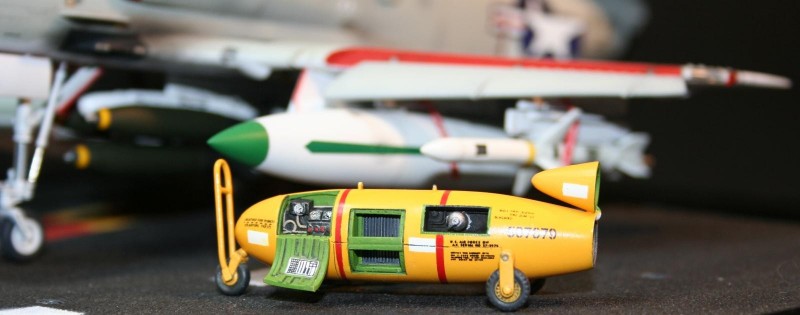
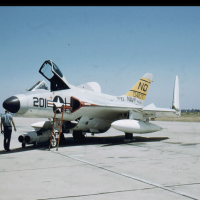
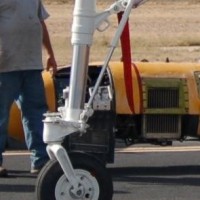

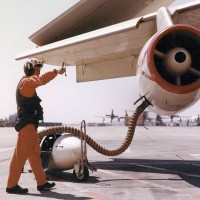
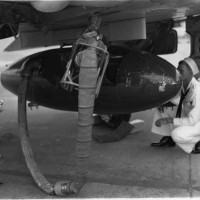
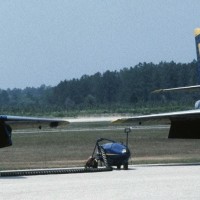

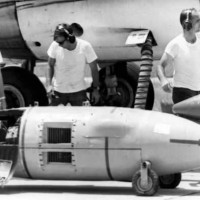
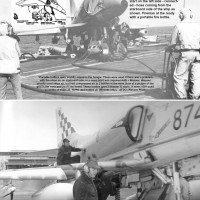
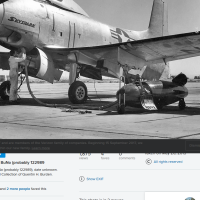
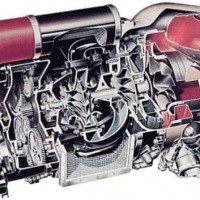
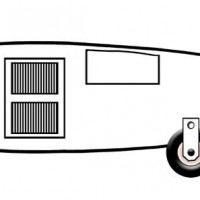
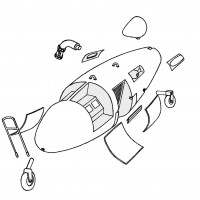
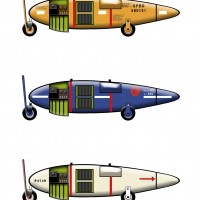
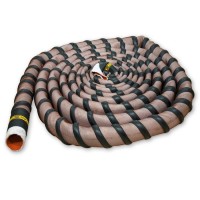
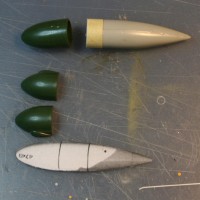
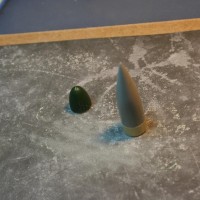
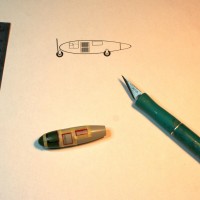

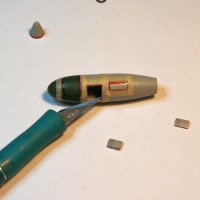
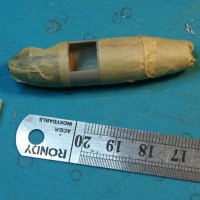
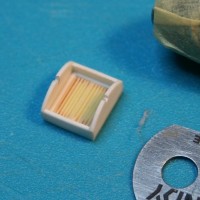
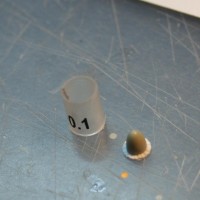
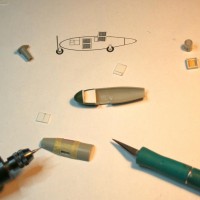
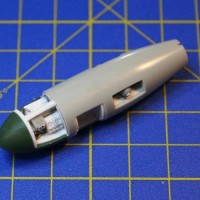
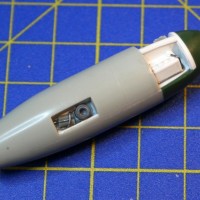
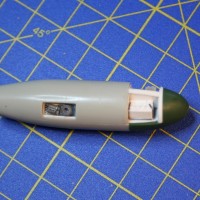
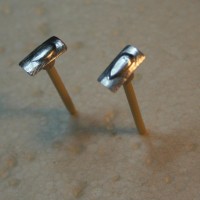

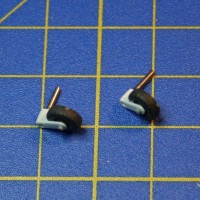
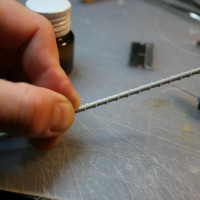
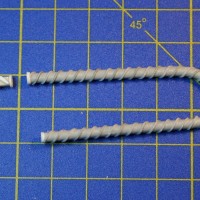
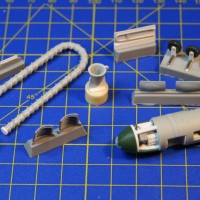
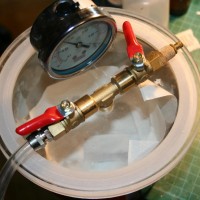
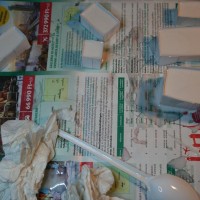
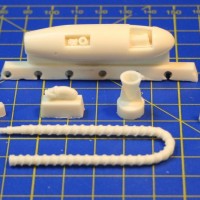

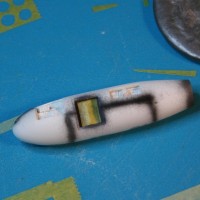

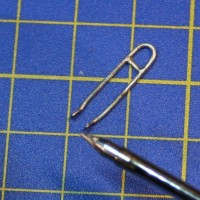

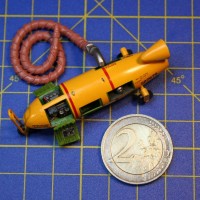
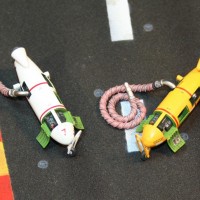
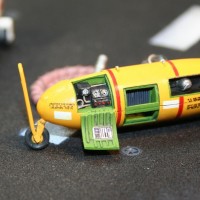
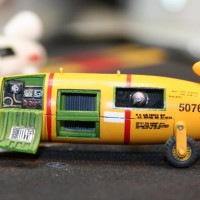
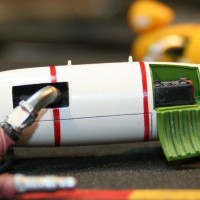
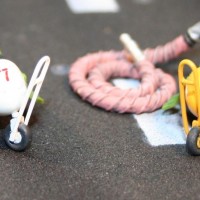
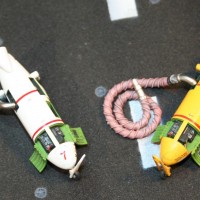
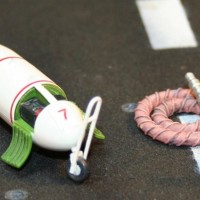
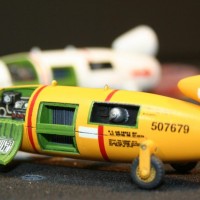
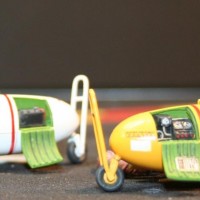
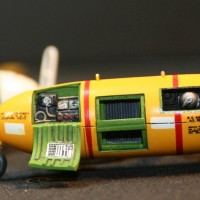
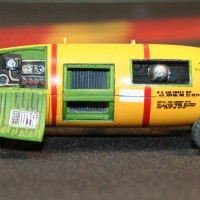
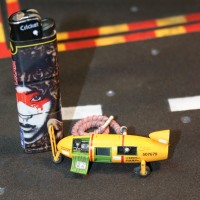
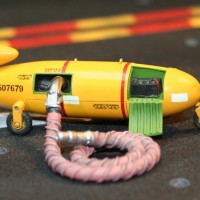
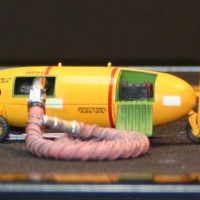
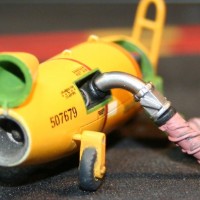
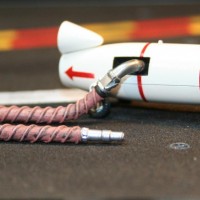
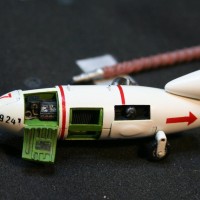
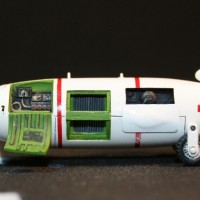
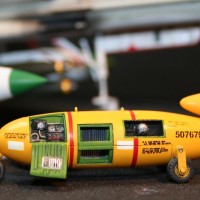
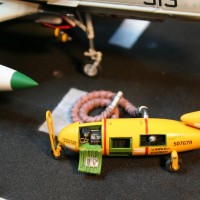
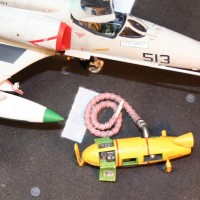
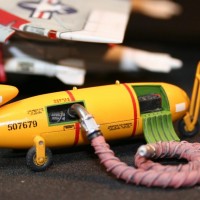
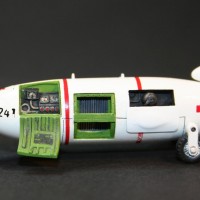
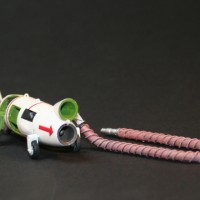
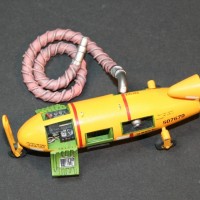


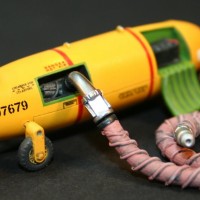
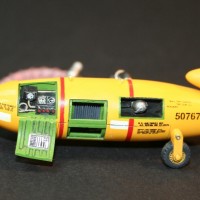

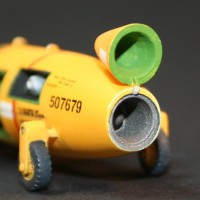


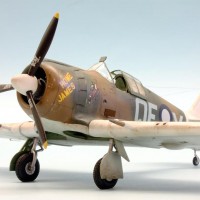
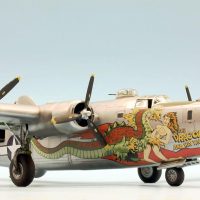
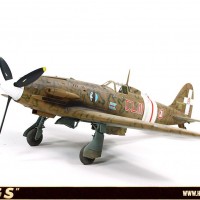
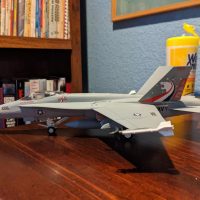
What's not to like! A great build indeed. These were all but gone in my time.
Thank You! 🙂
Looks like it was more of a challenge than building an airplane to go with it - 🙂
Great accessory, Gabor! I like the white one, but I'm with you - the yellow is better.
You could market these!. Well done, Amigo!
Thank you Jeff! You've got the point 🙂 If there will be some interests I probably make a small serie... cos it was a bit more involving build than I thought.
Hi Jeff, I finally made a boxart for the huffer - thanks for the encouraging 🙂
Great project! Important/interesting piece of aviation got perfect treatment from you (and clever design from the beginning). First-class documentation and implementation 5/5. Next one: compact bowser with extra hoses ...?
Thank You! My girl sayd that it's like an old school vacuum cleaner 😀 Shapewise the old Russian (spell CCCP 🙂 ) "Rocket" (Raketa) vacuum cleaner was very very similar...
Great build, amazing work, I liked the article as well.
Thank You Marc!
Fascinating, Gabor. Beautiful engineering and terrific execution. I like these more esoteric builds, like your 'ladders' (lol). You clearly have an engineer's soul, Gabor.
Thanks a lot. A bit off comparing to an aircraft build but it was interesting experience indeed.
Fantastic work! Great piece of history and you did quite some research, very interesting to read.
Thank You! I learned a lot during this build.
Much more interesting than I thought it was going to be, I enjoyed it from beginning to end, but I'm afraid I prefer the white one...
Thank You! OK, one vote for the white 😀 !
Hey Gabor,
I have wanted one of these from the point i started researching the Blue Angels about 30 years ago. I have wanted one in my A-4/KC-130 diorama. As seen in your pictures, they painted them up like one of the jets and gave them numbers too. I hope someone works with you to use your masters to sell these- not sure why Flightpath or Wolfpack has not marketed one yet!
Excellent work of course! I give my vote to the yellow.
Dan.
Thank You! On the fifth photo there is the huffer exactly You speak about! Thanks for Your vote. I think I will make some copies as You are not the only one who wrote me about the thing 🙂
Yes, you can add me to the list of folks who would be interested in one...same reason, Blues A-4 display!
Great work Gabor - wonderful scratchbuild of this piece of equipment!
Thank You! I hope it will add some interest for my NAVY planes.
Excellent work Gabor and a well written article as well
Thank You very much!
Wonderful work on this and an interesting article, Gabor. Thanks for the detailed description on how you did it. Very creative!
When I was young I remember an airshow at Pt. Mugu NAS where the Blue Angels used this for starting the Skyhawks before their demo. I don't know if someone left the brake off or the fuel control unit on the huffer went crazy, but we suddenly saw this little bomb-shaped cart scooting across the ramp chased by several ground crewmen. Fortunately no-one was hurt and it didn't hit anything.
Quite a contrast to the normal carefully choreographed Blues start ritual. Us kids had a heyday with it.
Thank You! I can imagine the scene. I've read some forums and the aircrew people said that they regularly ride these huffers (which was strictly prohibited naturally) just for fun as the turbine was strong enough to move the thing on the ground. They sat up on the top and pushed forward the grip 😀
As I've come to expect from you, simply fantastic! Love the detailed step-by-step pics showing your process. The result is of course a great piece of modeling.
Thank You Greg! You are too kind to me as always 😀
Very cool and beautifully done. My dad used to work for Garrett Air Research back in the 60s. It was right down the street from LAX. They also made the life support systems for the Apollo moon missions and we'd see the astronauts training on a giant vertical treadmill. They had great company Christmas parties, too.
Wow! You must heard really cool stories! Thanks!
Hi,
Excellent job, congratulations 🙂
Eric
Thank You Eric! 🙂
Very interesting result and very impressive work.
Thank You Tom 🙂
wow, a delicate and precise work on this scale and with great detail.
Awesome
REGARDS
Thanks a lot! In "gentlemen's scale" (I mean 1:72) It would have been a more challenging experience...
Do you have dimensions for the huffer?
Sure: lenght approx 3,2m, (3216mm) diameter: 0,67m (672mm) and it's approx. 0,8m high on wheels from the ground.
Thank you! Fantastic work